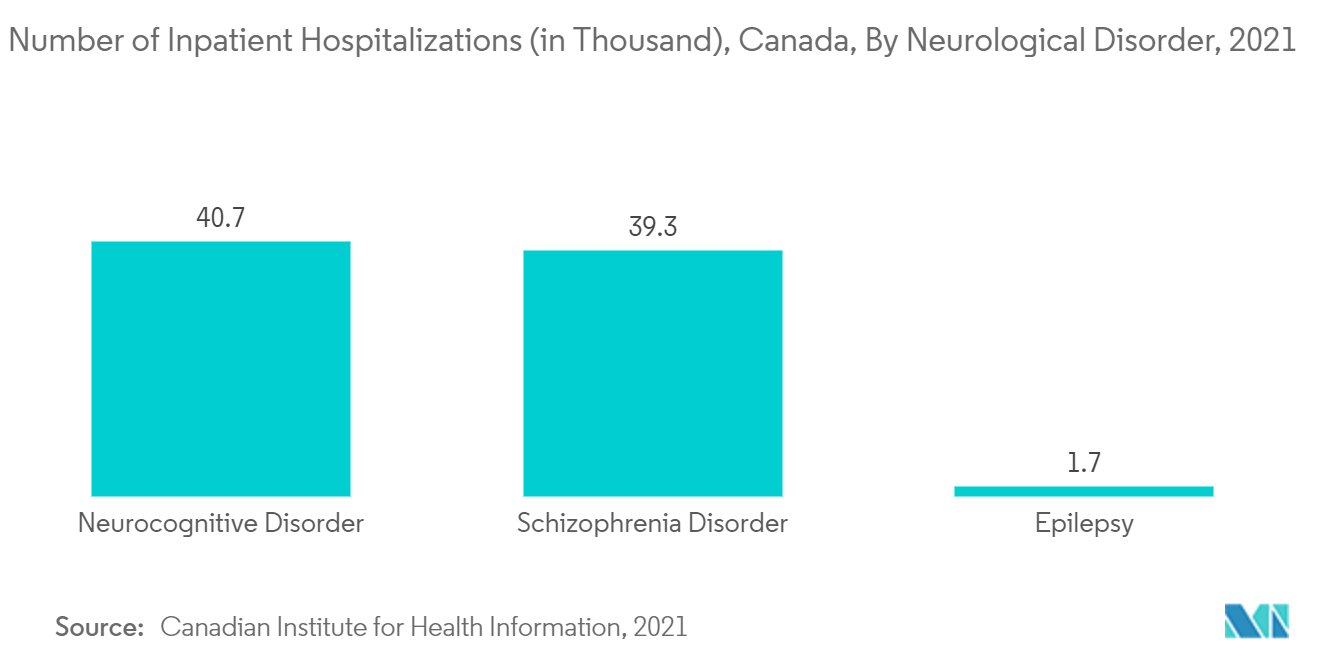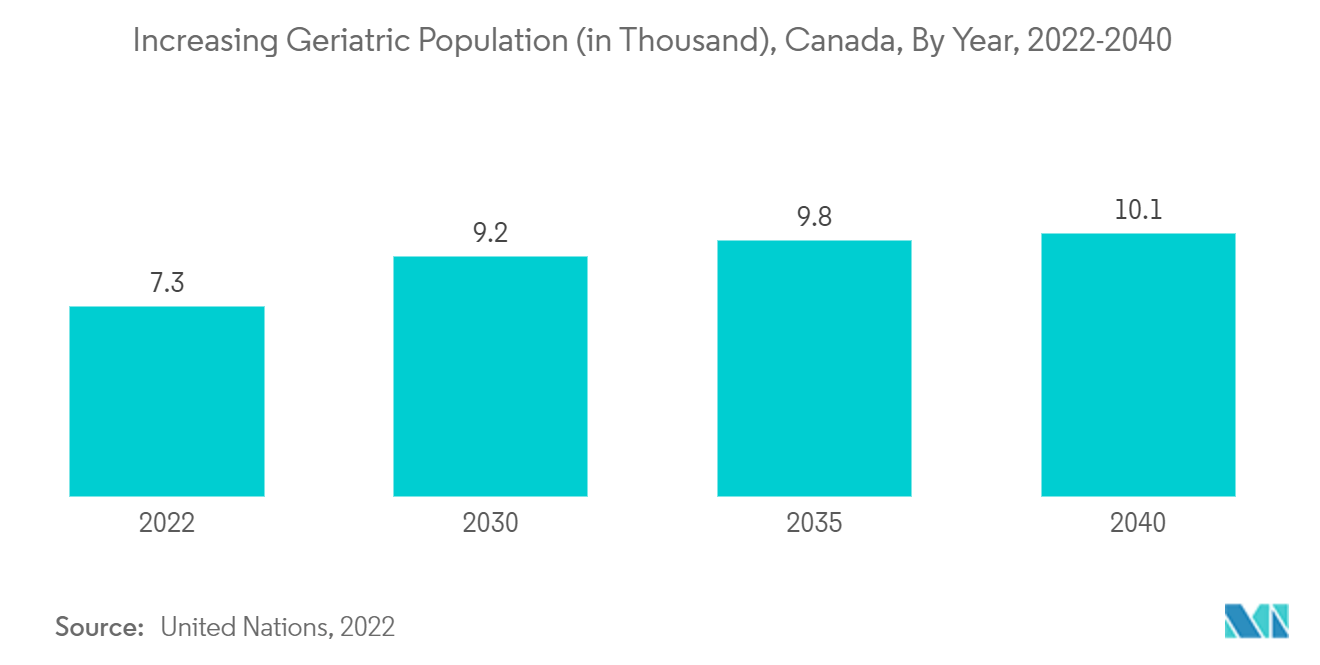Market Trends of Canada Neurology Devices Industry
This section covers the major market trends shaping the Canada Neurology Devices Market according to our research experts:
Neurostimulation Devices Expected to Witness a Significant Growth
Neurostimulation devices are generally used to diagnose and treat disorders of the ANS, CNS, and PNS. The segment is expected to witness significant growth over the forecast period due to the rise in the prevalence of neurological disorders, favourable reimbursement rates, and the introduction of innovative technologies.
In March 2021, the Canada Chronic Pain Factsheet reported that approximately 7.6 million, or one in five people (across the lifespan), were living with chronic pain. Also, one in five children and youth experience ongoing pain and can experience chronic pain once in their life span. The cases of chronic pain are comparatively more in the geriatric population. As Canada's population ages, the prevalence of chronic pain increases, which increases the demand for nerve stimulation devices, thereby driving the growth of this segment.
Also, in 2021, the Canadian Institute for Health Information reported 40.7 thousand neurocognitive disorder cases in the year 2021 in Canada with patients aged 65 and above, accounting for 3.4% of all inpatient hospitalization cases. The source also reported 39.3 thousand cases of schizophrenia, schizotypal and delusional disorders in Canada. Such a high number of neurological disorders like epilepsy and schizophrenia are leading to increasing demand for neurostimulation devices, thereby driving the growth of this segment.
Furthermore, various strategies, such as product portfolio expansion, investment in research and development, and mergers & acquisitions to establish a strong distribution network further propel this segment's growth. For instance, in July 2022, Abbott promulgated the Health Canada licensing of the NeuroSphere virtual clinic. NeuroSphere is compatible with Abbott's suite of neuromodulation technologies. It is a remote programming technology to provide flexibility to patients from their homes. NeuroSphere virtual clinic has the potential to increase access to optimal treatment for patients unable to reach their healthcare provider.
Thus, due to the rise in the prevalence of neurological disorders, favorable reimbursement rates, and the introduction of innovative technologies, the segment is expected to witness significant growth over the forecast period.

Neurosurgery Devices Expected to Witness a Significant Growth
The neurosurgery devices segment is expected to witness significant growth over the forecast period owing to the rise in neurological disorders, the increase in the number of minimally invasive surgical (MIS) procedures, and the increase in the geriatric population.
The increasing geriatric population is increasing the number of neurosurgery devices. With increasing age, the chances of developing various neurological disorders such as stroke, dementia, and Parkinson's disease increase. Most of these disorders can be controlled by medication, but some may demand neurosurgery. For instance, an article published by the journal Neurosurgery in June 2022 reported an increase in neurosurgical procedures in Canada, particularly among the geriatric population.
Also, the United Nations 2022 report stated that 7,320 individuals of the population in Canada are aged 65 and above, and this number is expected to increase to 10,162 by 2040. The increasing geriatric population may lead to an increase in neurological disorders, which may increase the demand for neurological devices, thereby driving the growth of this segment.
Furthermore, the increasing demand for MIS is due to the minimal damage to the body as opposed to traditional open surgery, and the body scars involved in MIS are barely noticeable. An article published by the journal Global Spine in July 2021 reported that the increasing success rate of MIS in neurosurgical procedures is driving the growth of this segment.
Thus, due to the rise in neurological disorders coupled with the increase in the number of minimally invasive surgical procedures and the increase in the geriatric population, the segment is expected to witness significant growth over the forecast period.


